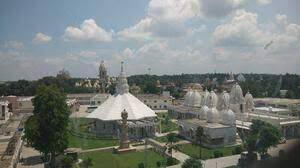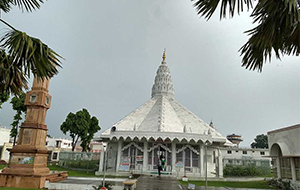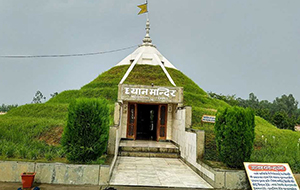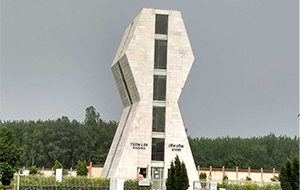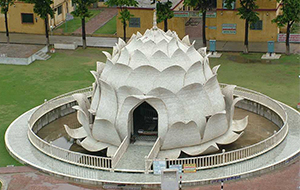Jambudweep is a Digambara Jain Temple in Hastinapur, Uttar Pradesh built under the blessings of Gyanmati Mataji in 1972. Jambudweep in Hastinapur is a depiction of Jambudvipa and Kailash Parvat Rachna & Shree Ashtapad Teerth are depictions of Ashtapad.
Jambudweep depicts the model Jain cosmology has been designed here under the supervision of Shri Gyanmati Mataji was in 1985. Unique circular structures of Jain Geography ‘Jambudweep’ has been constructed with white & coloured marble stones in the diameter of 250 feet (76 m) with 101 feet (31 m) tallMount Sumeru Parvat is built by light pink marble situated in the center of Jambudweep Rachna.
The official name of the tirtha is the Digambar Jain Institute of Cosmographic Research (Digambar Jain Trilok Shodh Sansthan) and its main attraction is the building constructed as a model of Jambudvipa.
The premises has various Jain temples which includes Sumeru Parvat, Lotus Temple, Teen Murti Mandir, Meditation Temple, Badi Murti, Teen Lok Rachna and many other tourist attractions. The main temples in the Jambudweep complex includes:
- Teen Lok Rachna is modeled after trilok in Jain cosmology, the temple has a series of floor representing seven Adho Loka — the realms of the hellish beings, then Madhya Loka – the realms of the humans, animals and plants, then seven Urdhva Loka – the realms of the gods or heavens and Siddhashila at the top.
- Sahastrakut Jinalya is notable for a panel depicting Jain monk in worship room praying to tirthankara.
- Lotus temple a small temple in the courtyard of Jambudweep. It is a Jain House of Worship and also a prominent attraction in Hastinapur. It was completed in 1989.
- Mt. Meru, surrounded by water, is the tallest structure in Jambudweep complex.
- Tera-dvipa is modeled after group of thirteen islands of the middle section of the universe in Jain cosmology. The structure features fived Mt. Meru, three islands where human and Jinas are born, the Jambudweep is situated in innermost circle and eight islands depicts nandishvar dweepa.

